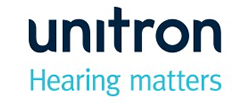Hearing Aids
When your hearing test reveals a hearing loss, and hearing aid/s would be of benefit, I discuss the options available to improve your hearing. Often a recommendation will be to trial hearing aid/s. There is a wide range of hearing aid styles, models and manufacturers and the choices can often be bewildering.
There are potential benefits and limitations of all styles – some of which will be important for the particular individual.
For example, completely-in-the-canal hearing aids are very easy to insert, to use with the phone, to avoid wind noise, etc, but they have small batteries and therefore are harder for people with visual/manual dexterity issues than larger styles. Small behind-the-ear hearing aids with domes are great because they do not cause any ‘blocked’ feeling in the ear, but can more easily be lost and can be more difficult to insert correctly.
Pensioners and veterans who are eligible for the Office of Hearing Services scheme receive fully funded services and funded/subsidised hearing aids.

The cost of hearing aids fitted includes:
- All fitting, review and repair appointments for the warranty period of the hearing aid (typically three years).
- Box of premium hearing aid batteries (60 cells).
- Initial supply of hearing aid consumables.
- Dri-aid jar and battery tester.
- For most hearing aids there is a 12 month loss/damage cover.
- Loaner hearing aids are available should your hearing aid need to be sent for servicing or repair.
I work with our clients to ensure their hearing and communication needs are met.
Range of Models
Receiver-in-the-canal (RIC) with dome/custom tip: Very cosmetically attractive, and very popular. A small behind the ear case contains most of the electronics, with a thin wire to the ear piece containing a tiny speaker. Ear piece can be custom-made ear tip or a silicon dome. Often a very open dome is used, reducing any occlusion/blocked feeling for the wearer. Sizes vary, from those with very small battery (size 10), or larger battery (size 312 or 13). Suitable for people with mild, moderate, severe and profound hearing loss. Especially suited to people with high-pitched hearing losses and good low-pitched hearing. Typically wireless (communicating with remote controls, bluetooth devices, mobile phones etc). May be rechargeable.
Behind-the-ear (BTE) with slim tube and dome/custom tip: Similar in looks to a RIC aid.Also very cosmetically attractive. All electronics are contained in the behind the ear case. Amplified sound travels down a thin tube to the ear piece. Ear piece can be custom-made ear tip or a silicon dome. Often a very open dome is used, reducing any occlusion/blocked feeling for the wearer. Sizes vary, and battery sizes are either 312, or larger (size 13, or size 675). Typically very reliable hearing aids as electronics are away from wax, moisture in ear canal. Especially suited to people with high-pitched hearing losses and good low-pitched hearing. Typically wireless (communicating with remote controls, bluetooth devices, mobile phones etc). May be rechargeable.
Behind-the-ear (BTE) with earmould: All electronics are contained in the behind the ear case. Sound travels down a tube to a custom-made earmould. Battery is either 312 or larger (size 13 or size 675). Typically very reliable hearing aids as electronics are away from wax, moisture in ear canal. Often the most suitable style for people with severe or profound hearing loss. Typically wireless (communicating with remote controls, bluetooth devices, mobile phones etc). May be rechargeable.
Choosing A Hearing Aid
There are many hundreds of hearing aids on the market in Australia, and it can be difficult to know which are going to be the best for you. There is no single ‘best’ hearing aid. What is best for one person might not be best for another person. Considerations such as:
- Cosmetic appeal
- Personal preference
- Cost
- Ease of use
- Comfort
- Battery size/hearing aid size
- Cleaning and maintenance
- Use with glasses
- Ease of phone use
- Amount of amplification required
- Type of hearing loss
- Anti-whistling technology
- Noise reduction technology
- Sound quality for speech and music
- Fine-tuning and adjustment options
- Bluetooth compatibility with iPhones and android phones
- Rechargeability
- Availability of apps to control the hearing aids

All have a bearing on the hearing aid/s recommended by me. I consider all of these factors when making recommendations about hearing aids.
Each hearing aid is expertly fitted and fine-tuned and reviewed through the trial period. Some manufacturers have special ‘trial’ hearing aids, which can be programmed to differing levels of technology, and which are available at our clinic. This simplifies the comparison.
How much do they cost? Health insurance rebates
Hearing aids can be quite expensive. The hearing aids I fit are ‘bundled’ so that the price of the hearing aids includes
- All fitting, review and repair appointments for the warranty period of the hearing aid (typically three years).
-
Box of 60 premium batteries.
-
Dri-aid jar and battery tester.
- Loaner hearing aids, which are available should your hearing aid need to be sent for servicing or repair.
The hearing aids I fit range in price from $2700/pair ($1350 per hearing aid) to $9,000/ pair ($4500 per hearing aid). I fit hearing aids from all 9 Australian manufacturers. I am registered with Health Insurers, and therefore rebates may apply for people with Health Insurance Extras cover. Hearing aid prices vary depending on the manufacturer, and also largely depending on the processing technology.
Typically, well-fitted good quality lower cost hearing aids are very good for listening in quiet situations, when watching TV and using the phone. They are also helpful in group situations and where there is background noise. The more advanced hearing aids aim to further reduce background noise and detect when there is music to automatically adjust the amplification as appropriate. I often recommend that a person trials lower-end hearing aids to determine whether these are satisfactory. In many instances, these prove to be almost as good as top-end hearing aids.

Trials
I believe that it is important to trial hearing aids in your everyday life for enough time to make a reasonable decision about them. It can take a little while to get used to the amplification, and sometimes this needs to be adjusted during the trial. This extra time and effort in adjusting the hearing aids or trialling several hearing aids leads to better long-term outcomes.
My trials are for 30 days and hearing aids are able to be returned. If no hearing aids are kept, there is a small fee towards the expenses incurred.

Adjustments/Repairs to Existing Hearing Aids
Clients who are concerned that their hearing aid/s may not be working optimally are able to attend a hearing aid evaluation appointment, for testing, advice and possible adjustments to their hearing aid settings.
I am able to repair hearing aids from all of the main companies.
Many repairs such as speaker replacement, wax clearance and battery door replacement are completed using my well-equipped repair facility. More complex repairs are sent back to the manufacturer.
During the time you are without your hearing aid, I am able to provide you with a loaner hearing aid until yours has returned from repair.

NDIS/Employment Assistance Fund/Workcover
-
Employment Assistance Fund
Under this scheme, funding is provided for people with a hearing loss who meet residency and hours of work requirements and who are assessed as requiring accessories (including hearing aid accessories) in order to carry out their work. Examples of accessories that have been funded under this scheme are:
- Bluetooth streamers
- TV adaptors
- Telephone adaptors
- FM/remote microphone systems
- Paging and alerting systems
Funding is also available for Auslan interpreters, and for workplace education about hearing impairment.
I can assist in the application for funding under the scheme.
- Workcover:
Alison Hennessy Audiology is a contracted provider of hearing services under the Victorian Workcover Scheme. Hearing assessments and the provision of Workcover-approved hearing aids, accessories and other hearing services under the scheme can be arranged.
- National Disability Insurance Scheme:
I am registered to provide services and devices under the NDIS. The scheme will operate in the Outer East Region from November 2017. Details of eligibility requirements and hearing devices able to be fitted under the scheme are yet to be finalised by the NDIS.

Make an appointment
Make an appointment for a hearing test or a hearing aid consultation.








